Key takeaways:
- Effective reporting in marketing goes beyond numbers; it involves storytelling and context to drive strategy.
- The importance of clarity and simplicity in reports is essential for effective communication, utilizing visuals to engage audiences.
- Continuous learning and collaboration enhance reporting skills, making insights more impactful and aligned with audience needs.
- Feedback and understanding the audience significantly improve report effectiveness, transforming data into compelling narratives.
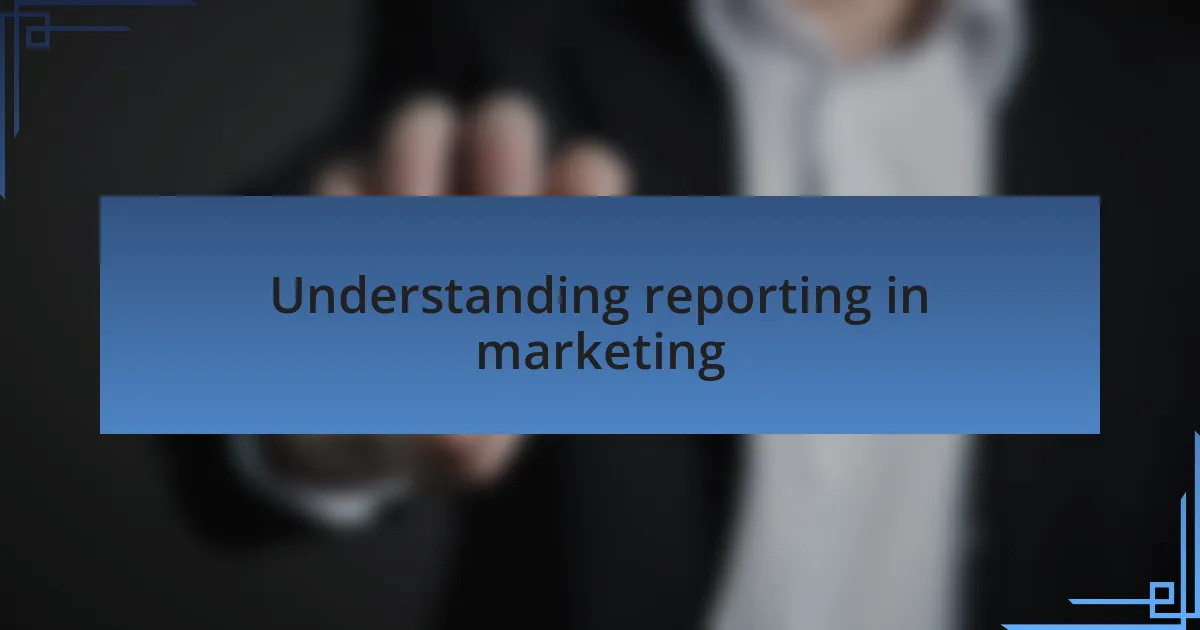
Understanding reporting in marketing
Understanding reporting in marketing is about more than just numbers; it’s about storytelling. When I first started analyzing data, I was overwhelmed by the metrics. But then I realized that behind every statistic, there’s a story waiting to be uncovered. Have you ever looked at a report and wondered, “What does this really mean for my audience?” That’s the moment when data transforms from a mere collection of figures into insights that can drive strategy.
As I honed my reporting skills, I learned to ask the right questions. What trends are emerging from the data? How does this information impact our target demographics? By framing my analysis around these questions, I discovered the significance of context. For instance, noticing an increase in website traffic led me to explore the types of content that resonated, which ultimately shaped our content strategy. Isn’t it fascinating how one piece of data can lead to a cascade of strategic decisions?
In my experience, great reporting also involves a human touch. Sharing findings with my team and discussing what they really meant sparked richer conversations. It made me realize that effective reporting isn’t just about creating a report; it’s about fostering collaboration and making informed decisions together. How often do we consider the emotional reaction our reports might evoke? Understanding this can make our marketing efforts even more impactful.
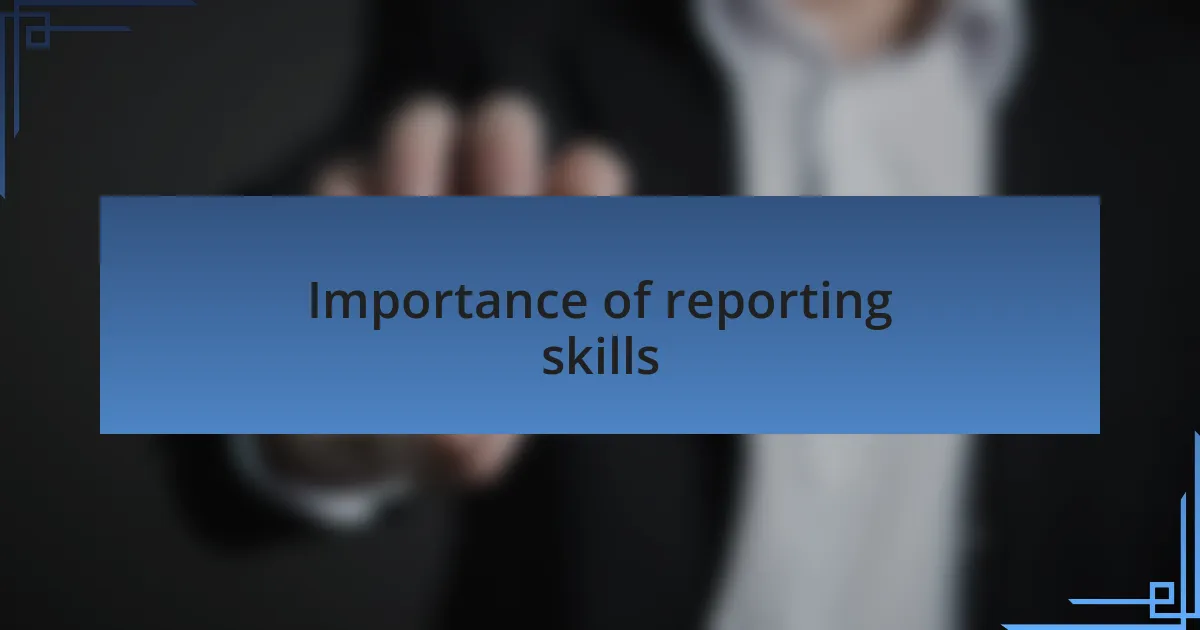
Importance of reporting skills
Reporting skills are vital for translating complex data into compelling narratives that resonate with stakeholders. I remember when I first shared a report filled with graphs and statistics; the glazed expressions told me everything. It struck me then that it’s my job to make data relatable. How do I help my audience connect the dots? The answer lies in crafting accessible reports that speak their language.
Moreover, a strong reporting ability fosters accountability and strategic alignment within a team. In my early days, I often presented numbers without context, leaving others confused about the path forward. When I began weaving in clear objectives and actionable insights, collaboration flourished. It made me appreciate how crucial it is to align our reporting with broader business goals. Isn’t it essential that everyone is on the same page?
Finally, the evolving landscape of digital marketing demands continuous improvement in reporting skills. As trends shift rapidly, staying adept at interpreting and presenting data becomes paramount. I’ve found that ongoing learning—through webinars, blogs, or even feedback from peers—keeps my skills sharp. How else can we effectively navigate the ever-changing market? Embracing this learning curve has consistently provided me with the tools to lead my team confidently through uncertainty.

Tools for effective reporting
When it comes to effective reporting, having the right tools can make all the difference. I’ve experimented with various platforms, but once I discovered Google Data Studio, I found my reporting transformed. The ability to create visually appealing dashboards that auto-update made sharing insights not only straightforward but enjoyable. I often ask myself, how can I represent this data in a way that truly captures its essence? With tools like this, I’m able to answer that question with confidence.
Another essential tool I swear by is Trello for organizing my reporting tasks and deadlines. I’ve learned the hard way that efficiency in preparation prevents last-minute stress. By visualizing my project stages, I can prioritize what needs attention, making my reports more coherent and timely. Has anyone else experienced the chaos of a disorganized workflow? Streamlining my process has elevated not just my reports but also my overall peace of mind.
Finally, I can’t ignore the power of collaboration tools like Slack and Tableau. They’ve revolutionized how I gather insights from my team. When I can quickly share data and get real-time feedback, it opens up new perspectives that enhance my reports. I often wonder, have these collaborative efforts led to richer storytelling in my presentations? The answer is a resounding yes; the synergy created through these platforms has undeniably improved the relevance and impact of my reporting.

Analyzing data for insights
Analyzing data for insights has become a crucial part of my reporting journey. One instance that stands out is when I was tasked with interpreting website traffic trends for a client. I remember poring over the numbers, and it suddenly clicked: certain seasonal spikes in traffic weren’t just coincidences; they correlated with targeted campaigns we had implemented months before. It struck me how vital it is to look beyond raw numbers and connect the dots—what patterns are emerging that I can leverage?
I’ve also realized that effective data analysis often requires a keen eye for detail and a bit of emotional intelligence. Last month, while evaluating social media engagement, I noticed that a specific post had an unexpectedly high interaction rate. I felt a curious mix of excitement and introspection; was it the visuals, the timing, or perhaps the way we tapped into current events? Understanding the ‘why’ behind those numbers not only satisfies my analytical curiosity but also fuels my future content strategies.
Moreover, I often engage with different stakeholders to verify my insights, which has taught me the value of multiple perspectives. A recent conversation with a client revealed that their audience was craving educational content—a detail I had missed in the data. I often ask myself, how can I transform these insights into action? This collaborative discovery process has made my reporting not just informative but also deeply impactful, guiding strategic decisions that align with audience needs.
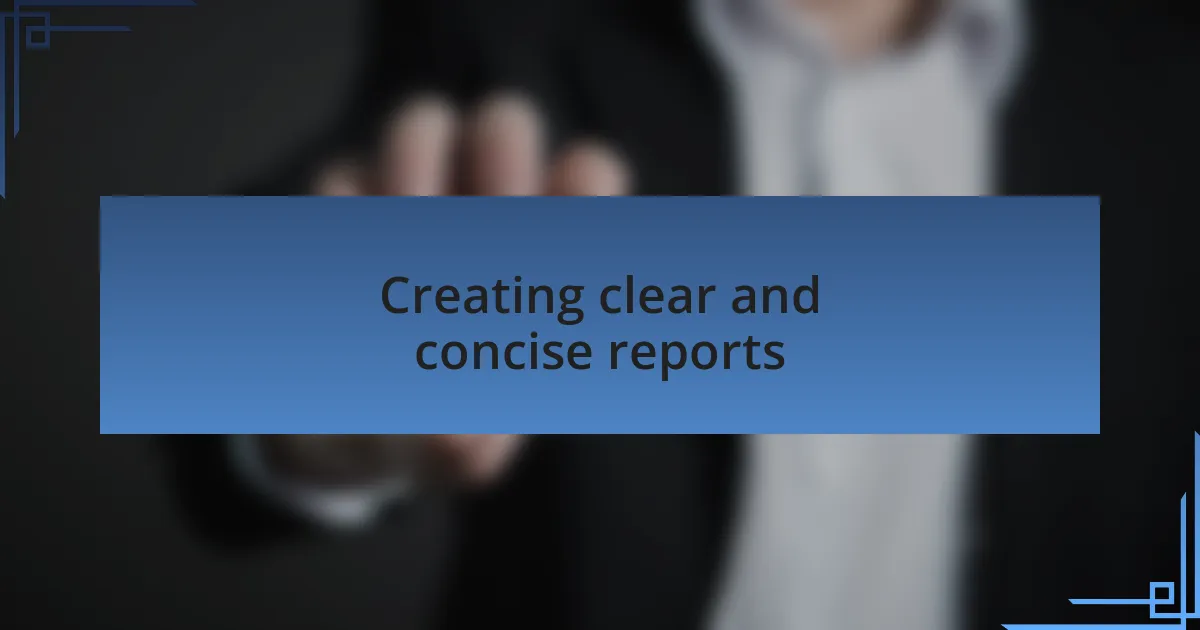
Creating clear and concise reports
Creating clear and concise reports requires a focus on simplicity and directness. I remember the first time I put together an analytics report for a client. I had a wealth of data at my fingertips, but it took me a few tries to distill that information down to the essentials. I asked myself, what do they really need to know? This mindset helped me highlight key metrics without overwhelming them with technical jargon.
I learned that visuals, like graphs and charts, play a pivotal role in clarity. During one project, I decided to use a simple infographic to summarize a month’s worth of data. The feedback was overwhelming—clients appreciated the immediate understanding that came with it. It made me realize how often we might overlook the power of visuals in reporting. Why complicate things when the goal is effective communication?
Feedback from colleagues has also shaped my approach to writing concise reports. There was a time I rushed through crafting a summary, thinking I was being efficient. However, after a colleague pointed out the confusion it sowed, I began to value clarity over speed. Now, I always ask myself, is this report a reflection of my best effort to communicate clearly? Every report I write is not just a task; it’s a chance to connect and inform.
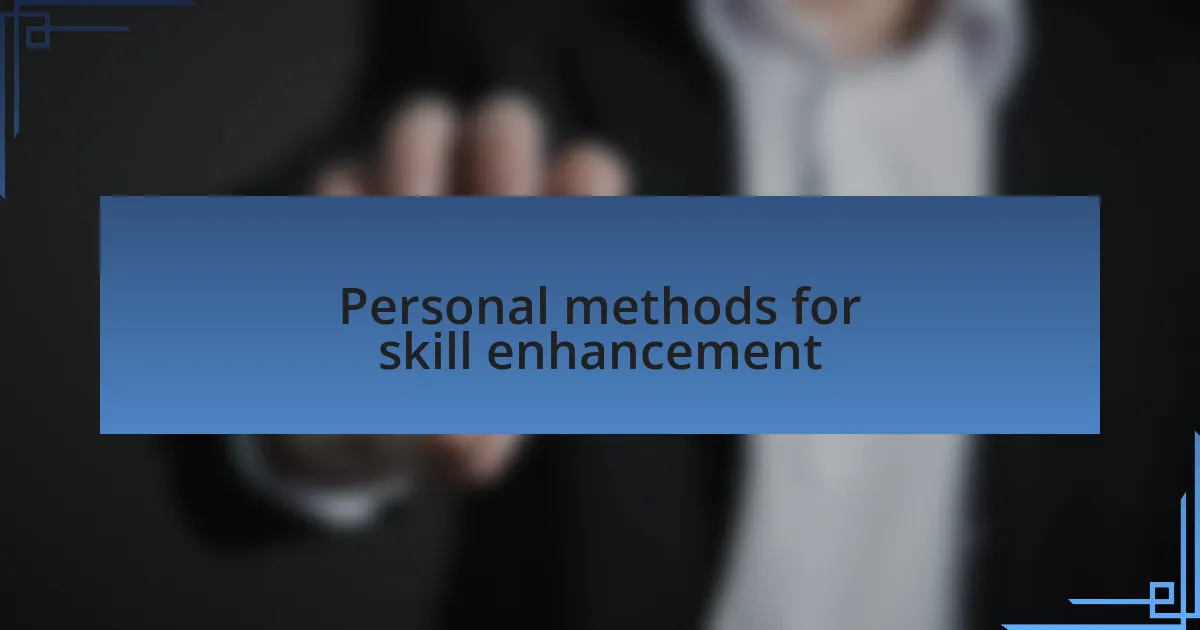
Personal methods for skill enhancement
One personal method that significantly improved my reporting skills was the practice of regular self-review. After completing a report, I would set it aside for a day before revisiting it. This allowed me to see the information from a fresh perspective. I often found that revisiting my work made me realize where I had included unnecessary details that could confuse the reader. Could this be a tool you could adopt?
I also sought out online courses and workshops focused on report writing and data visualization. Taking the time to learn from experts in the field was eye-opening. One particular course took a deep dive into storytelling with data. I still remember that lightbulb moment when I realized data could not only inform but also engage. Incorporating storytelling helped me transform my reports from mere documents into narratives that resonate with clients.
Moreover, I began to use a collaborative approach by engaging clients early in the reporting process. Before a project wraps up, I now ask them what specific insights they’re looking for or what challenges they face. This dialogue not only shapes my reporting focus but also fosters a connection where clients feel heard and valued. Isn’t it wonderful how collaboration can enhance our understanding and reporting quality?
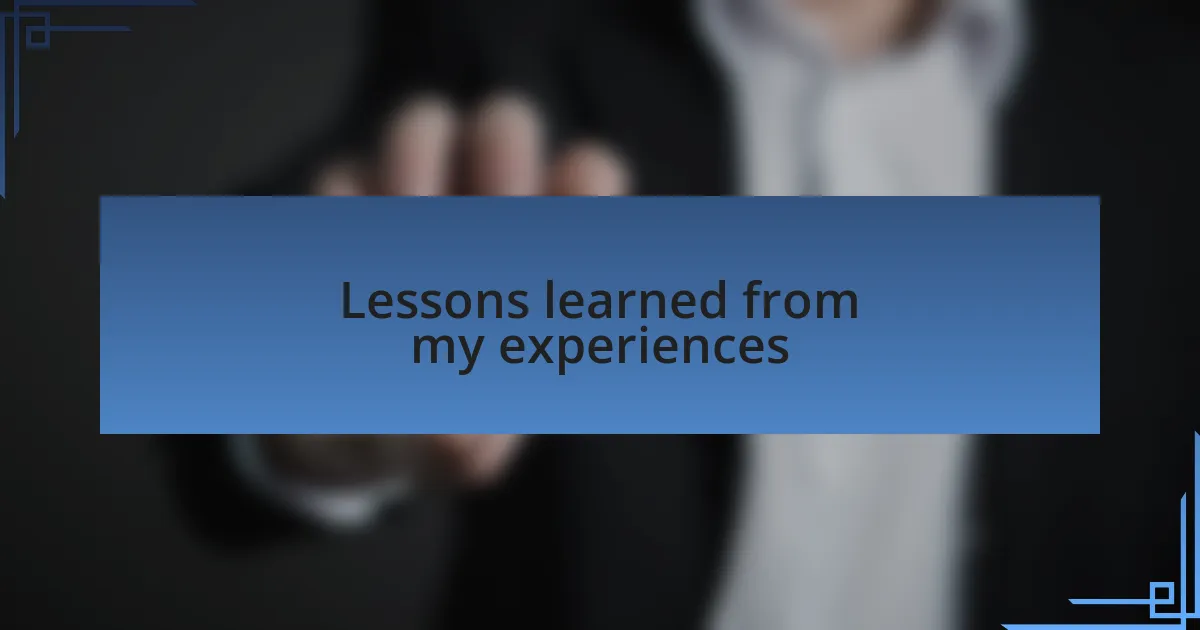
Lessons learned from my experiences
Throughout my journey, one key lesson I’ve learned is the value of feedback. Early on, I hesitated to share my reports with colleagues, fearing their critiques. However, once I started seeking their input, I discovered that constructive criticism not only improved my work but also enriched my learning experience. Isn’t it fascinating how collaboration can open our eyes to new possibilities?
Another significant realization was the importance of understanding my audience. There was a time when I’d spent hours perfecting data visualizations, only to be met with blank stares in meetings. It dawned on me that if I didn’t tailor my content to my audience’s needs, my efforts were in vain. I began to ask questions that helped me discern what my audience valued, ultimately making my reports much more impactful.
Lastly, embracing the art of storytelling transformed my reporting approach. I vividly recall a project where I wove a narrative around the data, bringing it to life in a way that intrigued my clients. Seeing their reactions—engaged and interested—was a moment of pure satisfaction. It taught me that facts alone can sometimes fall flat; it’s the stories we tell that linger and inspire action. Have you ever considered how a narrative can change someone’s perception?